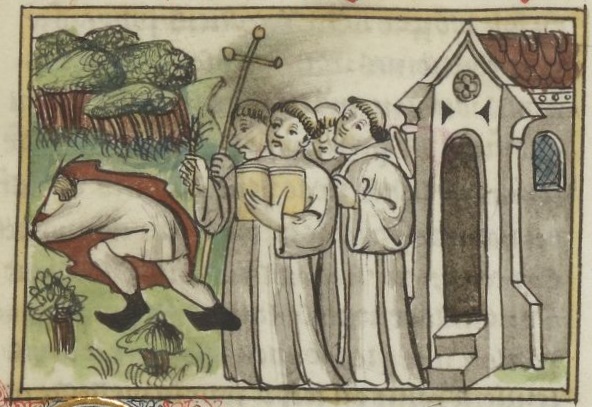The World of Books by the Books Editor
At this time of the year many people are thinking about and booking their summer holidays. Not many I suspect, planning that annual stay in the sun- drenched Umbrian region of central Italy, will be considering its connection with Lough Derg and with the medieval shrine of Patrick’s Purgatory.
Those planning a trip to Umbria will think first of a visit to Assisi or one of the other historic cities and shrines of the region. But Todi, where a surprising number of fortunate Irish people have second homes, has a connection with Lough Derg.
Legend ascribes the foundation of the town to Hercules, rather than to the historic tribe the Umbri. It has recently been called the “most liveable city in the world”.
However, of great interest to Irish visitors is something quite different. In the enclosed convent of the Sisters of St Clare in Todi is a remarkable fresco. It is a schematic depiction of the shrine of St Patrick, not perhaps as it was in its actual physical form, but in its mystical interpretation.
Some six surviving panels show the stage of the passage of the souls through Purgatory. The fresco is a sort of theological interpretation of St Patrick’s Purgatory [pictured is a medieval view of the Purgatory cave] as understood in Italy. This fresco is not a tourist sight – special arrangements have to be made to see it, as the convent is not, of course, open to the manifestations of modern mass tourism – which is just as well.
But the fresco is of great interest to scholars. The idea of Purgatory developed and took on a special significance from the 12th Century on.
One can see in so many carvings and illustrations of the period not only the idea of the purging of the effects of sin, but also in the analogous images of Hell, the notion that the rich and powerful both aristocratic – the medieval equivalent of people with second homes perhaps – and clerical would in the next life receive the condign punishments that ordinary people felt they deserved, but could not impose on them. In many the sinful clergy are herded naked into the gaping mouth of Hell.
The shrine at Lough Derg had down to the 17th Century a Europe-wide reputation. Before a financial scandal led to the Vatican playing it down, it left its mark on European culture in many ways, and not only in playing an important part in the development of theological beliefs about the afterlife. It was for instance the subject of a play by the great Spanish dramatist Calderon (translated into English by the Irish poet Denis Florence McCarthy).
In the very first scene of Hamlet the apparition of the ghost is invoked by the name of St Patrick. Seen as the late king, he is referred to as “a perturbed sprit”. Here as in so many places in Shakespeare’s work we hear an echo, albeit a weakening one, of the medieval Catholic beliefs that the Reformation had tried to shift.
This complex history of the shrine at Lough Derg, of which the Todi fresco is a small part, is dealt with in The Medieval Pilgrimage to St Patrick’s Purgatory: Lough Derg and the European Tradition, edited by Michael Haren and Yolande de Pontfarcy (Clogher Historical Society, 1988). This is now out of print, but readily available through the public library system
The term ‘holiday’ has its origins in the medieval Holy Day, a church feast which often provided the little time off people had. Yet in the summer, as at Lough Derg, between sowing and harvesting many would take a longer break and travel to a famous shrine, just as Chaucer shows in the Pilgrims Progress. Perhaps today it might as well if people gave a thought to the same thing, a trip not to the sunshine of Todi, but the rigours of Lough Derg.


 Peter Costello
Peter Costello Medieval view of the Purgatory cave
Medieval view of the Purgatory cave 